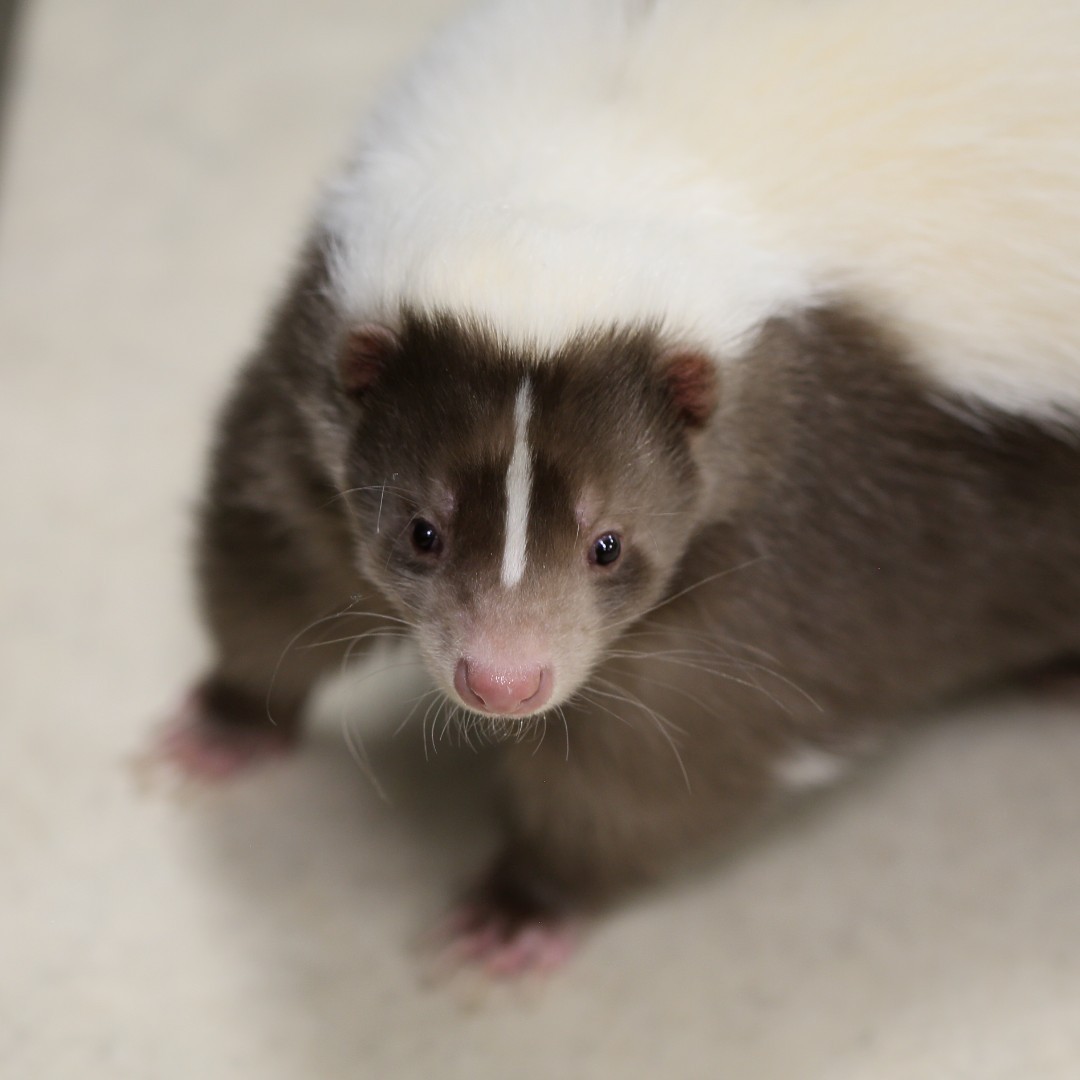– The biology and physical characteristics of the striped skunk
– Understanding the striking spray defense mechanism of skunks
– Skunks in the ecosystem: their roles and interactions with other species
– Conservation efforts and the importance of skunks in biodiversity
– How to coexist with skunks and appreciate their role in nature
—
The striped skunk, or Mephitis mephitis, is a nocturnal mammal synonymous with its defensive odoriferous spray and prominent coloration. The skunk, known for the distinctive white stripe that graces its black coat, is more than just a cautionary tale for curious predators; it’s an integral part of the ecosystem and a fascinating subject for study.
Beginning with their biology, striped skunks are medium-sized creatures weighing between 2.5 to 14 pounds, with a body length of up to 29 inches, including their fluffy tail. Aside from the stark stripes that serve as a warning sign to would-be attackers, their fur is dense, which helps them withstand cold temperatures. They have relatively short limbs with five-toed feet equipped with claws, which are adept at digging for food. Their omnivorous diet includes insects, grubs, small rodents, amphibians, fruits, and plants, making them opportunistic feeders.
Striped skunks have few predators, thanks to their potent defense mechanism. When threatened, they can eject a foul-smelling liquid from glands near their tail’s base. This yellow-tinted, pungent spray is a mixture of sulfur-containing chemicals called thiols, which are highly offensive to most animals and people. A skunk’s aim is precise, and it can direct this spray with remarkable accuracy, hitting targets up to 15 feet away. This defense ensures their survival against larger predators such as coyotes, foxes, and owls, which have learned to recognize and mostly avoid the striped skunk’s warning colors.
In addition to their notorious spray, skunks’ sharp teeth and strong jaws influence their foraging habits. This, combined with a keen sense of smell, allows them to locate underground food sources. Striped skunks are solitary animals; they prefer to live and forage outside of the mating season. They are crepuscular and nocturnal, becoming most active at dusk and throughout the night.
The striped skunk’s role in the ecosystem is significant. By preying on a wide variety of insects and small pests, they contribute to controlling the population of these species. They are also seed dispersers, helping to propagate various plants within their habitats. Additionally, striped skunks often modify or take over the burrows of other animals, which different species can then use after they vacate.
Wildlife conservationists recognize the importance of striped skunks, as with all species, in maintaining ecological balance. They advocate for habitat preservation, ensuring skunks and other wildlife have the necessary spaces to live and thrive. As human development encroaches on natural habitats, skunks may come into closer contact with people, leading to increased sightings and, sometimes, conflicts.
This human-skunk dynamic requires attention, as the striped skunk plays a pivotal role in biodiversity and pest control. Communities can minimize negative interactions by learning how to coexist with these animals. For instance, securing trash cans, feeding pets indoors, and sealing entry points to homes can significantly reduce the likelihood of skunk intrusions. This harmonious coexistence is critical in fostering an appreciation for the striped skunk and its ecological contributions.
Engagement with local wildlife should be celebrated and integrated responsibly into our lives. For those curious about the secret lives of skunks and their arboreal neighbors, the TreeHouses exhibit at the VLM invites exploration. It provides educational insights into the fascinating interconnectedness of our backyards and beyond. Visitors can become citizen scientists, observing and documenting the diverse wildlife that shares our environment.
The striped skunk reminds us that nature is filled with wonders, perhaps sometimes misunderstood, but always worthy of our respect and protection. By spotlighting this captivating creature, we are called to reflect on our role in safeguarding the delicate balance of ecosystems and their diverse species. Whether through viewing the playful antics of a skunk in a museum exhibit or observing them under cover of darkness in our backyards, these small mammals offer a window into the complexity and beauty of the natural world.
*****
Source Description
🌿🦨 Hold your noses, because this we’re spotlighting the fascinating striped skunk! Known for that iconic white stripe running from forehead to tail, this creature stands out in the night with its bold warning colors.
🚫 But it’s not just about the stripes – skunks have a potent defense mechanism! When threatened, they unleash a noxious spray from their anal glands. This vile spray not only leaves a lasting stench but can also temporarily blind predators. Talk about a formidable defense strategy!
💨 With impressive aim, skunks can shoot their spray in any direction, up to 15 feet away! Nature’s own built-in defense system, the skunk reminds us that sometimes, it’s okay to stand out and defend ourselves boldly.
Ready to embark on a wild adventure? Don’t miss the exhibit TreeHouses: Look Who’s Living in the Trees, at the VLM through May 5! Then, explore the secrets of your own backyard trees and share your discoveries using Your photos could be showcased in our next feature! 📸🌲


